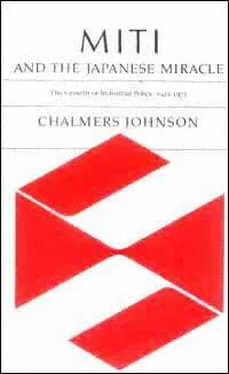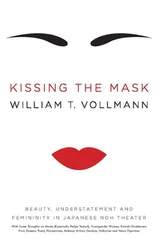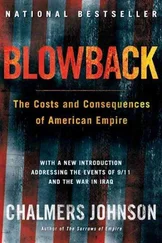Chalmers Johnson - MITI and the Japanese miracle
Здесь есть возможность читать онлайн «Chalmers Johnson - MITI and the Japanese miracle» весь текст электронной книги совершенно бесплатно (целиком полную версию без сокращений). В некоторых случаях можно слушать аудио, скачать через торрент в формате fb2 и присутствует краткое содержание. Год выпуска: 2007, Издательство: Stanford University Press, Жанр: Старинная литература, на английском языке. Описание произведения, (предисловие) а так же отзывы посетителей доступны на портале библиотеки ЛибКат.
- Название:MITI and the Japanese miracle
- Автор:
- Издательство:Stanford University Press
- Жанр:
- Год:2007
- ISBN:нет данных
- Рейтинг книги:3 / 5. Голосов: 1
-
Избранное:Добавить в избранное
- Отзывы:
-
Ваша оценка:
- 60
- 1
- 2
- 3
- 4
- 5
MITI and the Japanese miracle: краткое содержание, описание и аннотация
Предлагаем к чтению аннотацию, описание, краткое содержание или предисловие (зависит от того, что написал сам автор книги «MITI and the Japanese miracle»). Если вы не нашли необходимую информацию о книге — напишите в комментариях, мы постараемся отыскать её.
MITI and the Japanese miracle — читать онлайн бесплатно полную книгу (весь текст) целиком
Ниже представлен текст книги, разбитый по страницам. Система сохранения места последней прочитанной страницы, позволяет с удобством читать онлайн бесплатно книгу «MITI and the Japanese miracle», без необходимости каждый раз заново искать на чём Вы остановились. Поставьте закладку, и сможете в любой момент перейти на страницу, на которой закончили чтение.
Интервал:
Закладка:
The period 1952 to 1961 was the ministry's golden age. Using FILP, the Development Bank, the Industrial Rationalization Council, and several other powerful institutions, the Enterprises Bureau single-mindedly turned the Japanese industrial structure from light, labor-intensive industries to steel, ships, and automobiles, of which Japan is today the world's leading producer. To find comparable achievements by governmental bureaucracies in other nations, one would have to look to cases like the wartime Manhattan Project in the United States, or to NASA's sending a manned rocket to the moon. Although it is obvious that MITI could not have accomplished what it did with-
Page 241
out a mobilized people, without innovation and competition in the private sector, nor without the supplementary programs of other agencies of the government, it is equally true that the developmental effort itself required management. This is what MITI supplied.
In 1945, amid the ruins of Osaka, a group of businessmen lamented to an American observer that the militarists had "started the war twenty years too soon."
86
Although the figure should probably be more like forty years than twenty, it is nonetheless true that from about 1941 to 1961 the Japanese economy remained on a war footing. The goal changed from military to economic victory, but the Japanese people could not have worked harder, saved more, or innovated more ruthlessly if they had actually been engaged in a war for national survival, as in fact they were. And just as a nation mobilized for war needs a military general staff, so a nation mobilized for economic development needs an economic general staff. The men of MCI, MM, and MITI had been preparing to play this role since the late 1920's. During the 1950's the trumpet finally sounded.
Page 242
Seven
Administrative Guidance
Sahashi Shigeru was born April 5, 1913, in Toki city, Gifu prefecture, a small ceramics center about an hour and a half by train from Nagoya. He came from a family of modest means (for some 60 years his father operated a small photographic studio near Toki station), and the fact that he ultimately graduated from the Law School of Tokyo University reflects the considerable openness to talent, regardless of financial capability, of the educational system before the war. Sahashi attended Tokai * Junior High School in Nagoya, commuting daily on the 5:00 a.m. train; after passing the entrance examination to the Eighth Higher School (Hachiko*), in Nagoyacomparable to an American liberal arts collegehe received the support of his father in attending the famous prep school, despite the economic difficulties the family faced in helping him. From Hachiko he went on to Todai*, where he graduated in the class of 1937. Sahashi failed in an attempt during his junior year to pass the Higher-level Public Officials Examination, but he succeeded as a senior. Because of his lack of connections, he applied to all the ministries. He was accepted by both Finance and MCI, and he chose Commerce and Industry on the grounds that even if the country went socialist (as seemed possible during the depression), MCI would have a role to play.
1
Four months after Sahashi joined the ministry, Japan was at war with China, and four months after that Sahashi was drafted and dispatched to the central China front. Most graduates of the Imperial universities in this period were found unfit for military service on physical grounds, but Sahashi always had a strong constitution and passed the exam easily. As a Todai graduate he experienced a good deal of physical abuse in the army, but the experience seemed to have hardened himhe participated in the battle for Wuhanand to have
Page 243
contributed to his growing self-confidence. He completed his military service and returned to MCI during the same month that Kishi took over as minister (October 1941). He notes in his autobiography that during his absence the ministry had been completely transformed: the old Industrial Affairs Bureau he had joined in 1937 had been replaced by half-a-dozen industry-specific vertical bureaus, each of them devoted to fostering and controlling its industry for war production. He worked throughout the war in various MCI and Munitions Ministry bureaus until November 1946, when he received his first appointment as a section chief (see Appendix C).
Sahashi Shigeru was destined to become the best-known and certainly the most controversial of MITI's vice-ministers. His background, outlook, and personality all contributed to his reputation as an "exceptional bureaucrat" (
ishoku
kanryo
*), a "samurai among samurai," an "official who uses force" (
gebaruto kanryo
), the "monster Sahashi" (
kaijin Sachan
) in the press's amused term, the undisputed leader of the ''nationalist faction" within MITI, and, in Suzuki Yukio's words, the leading "industrial nationalist" of his time.
2
As chief of the Enterprises Bureau and later as vice-minister, he presided over the ministry's initial response to economic liberalization, and his policies laid the groundwork for the extremely rapid industrial growth of the late 1960's. Through his actions and his strongly enunciated opinions he set off a series of explosions that sent shock waves not only through the worlds of bureaucracy, industry, and finance, but also through the world of politics. His career offers what is probably the best Japanese example of the inseparability of bureaucratic interests and substantive issues of policy when the state dominates administration of the economy.
As one measure of his influence, Sahashi and his era have been made the subjects of at least three popular novelsone of which (by Shiroyama Saburo*) Sahashi liked and one of which (by Akaboshi Jun, the pseudonym of Nawa Taro* of the
Asahi shimbun
) deeply irritated him; all of them reflect the public's fascination with his spirited, "high posture" defense of MITI's handling of the economy. Among his many achievements, intentional and inadvertent, he institutionalized "administrative guidance" (
gyosei
*
shido
*) as MITI's main means of implementing industrial policy after it lost its control over foreign exchange; and the internationalization of the ministry that followed in the wake of his vice-ministership was as much a reaction to him personally as to the policies he espoused.
*


*
The novels are Shiroyama's
Kanryo-tachi
*
no natsu
(The summer of the bureaucrats; 1975), Akaboshi's
Shosetsu
*
Tsusan-sho
* (A MITI novel; 1971), and Akimoto Hideo's work
(footnote continued on next page)
Page 244
Sahashi spent virtually all of his career in the various industrial bureaustextiles, coal, and heavy industrieswhere he was also to spend the four critical years 1957 to 1961. As we saw in the last chapter, in 1951 he clashed with Chief Secretary Nagayama and was exiled to Sendai. Upon his return to the home office, he worked as chief of the Coal Policy Section just as the initial rationalization policies were being undertaken to try to save some of Japan's domestic energy production in the face of imported (and at the time highly price-competitive) petroleum. Because of his successful work in coal, the great senior of coal administration and then vice-minister, Hirai Tomisaburo *, named Sahashi chief of the sensitive Secretarial Section (Hisho-ka), which was the office in charge of all hiring and personnel assignments for the ministry and also the MITI equivalent of MCI's Documents Section (Bunsho-ka), which Yoshino and Kishi had used so effectively to establish the Yoshino-Kishi line.
Читать дальшеИнтервал:
Закладка:
Похожие книги на «MITI and the Japanese miracle»
Представляем Вашему вниманию похожие книги на «MITI and the Japanese miracle» списком для выбора. Мы отобрали схожую по названию и смыслу литературу в надежде предоставить читателям больше вариантов отыскать новые, интересные, ещё непрочитанные произведения.
Обсуждение, отзывы о книге «MITI and the Japanese miracle» и просто собственные мнения читателей. Оставьте ваши комментарии, напишите, что Вы думаете о произведении, его смысле или главных героях. Укажите что конкретно понравилось, а что нет, и почему Вы так считаете.












